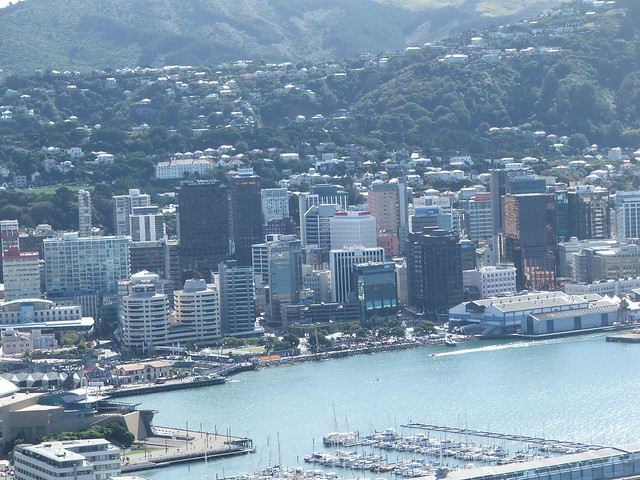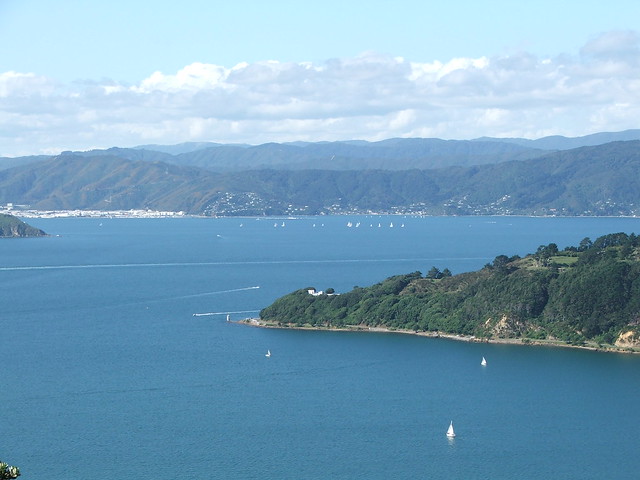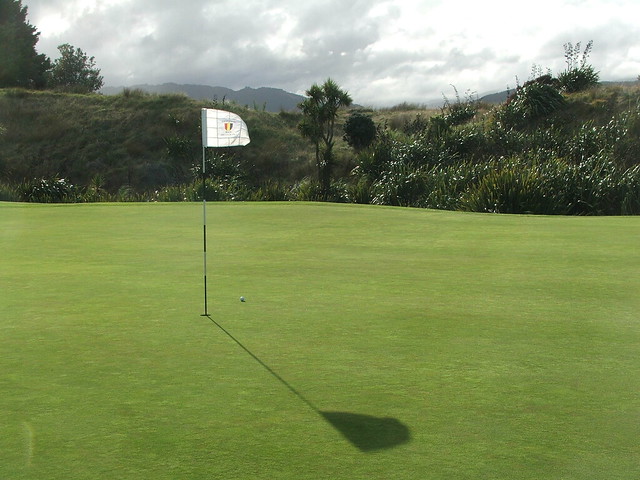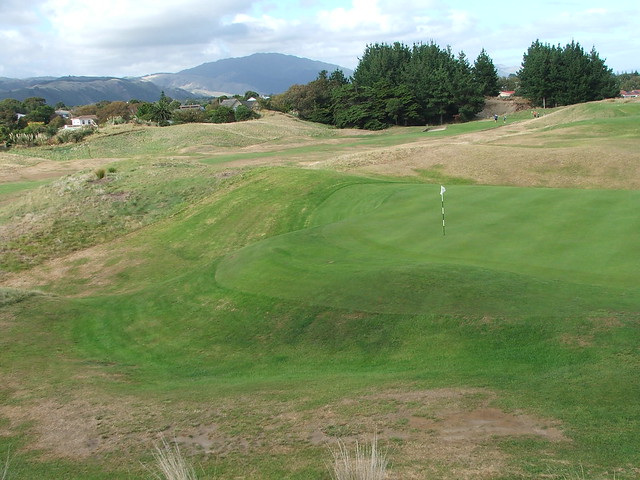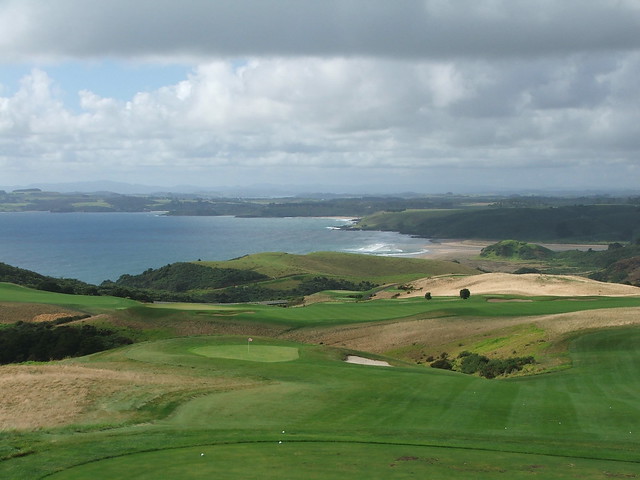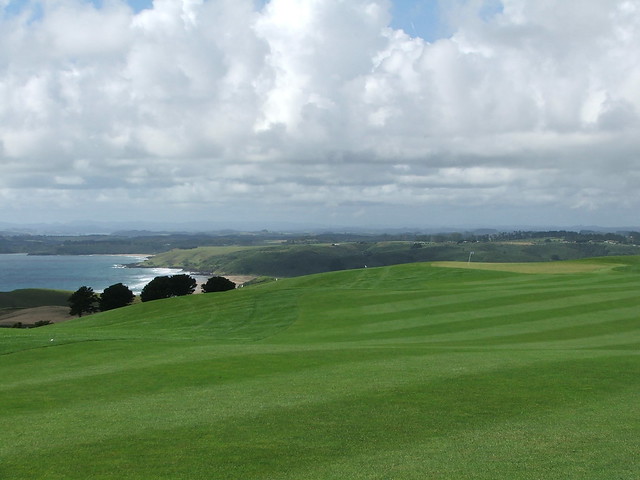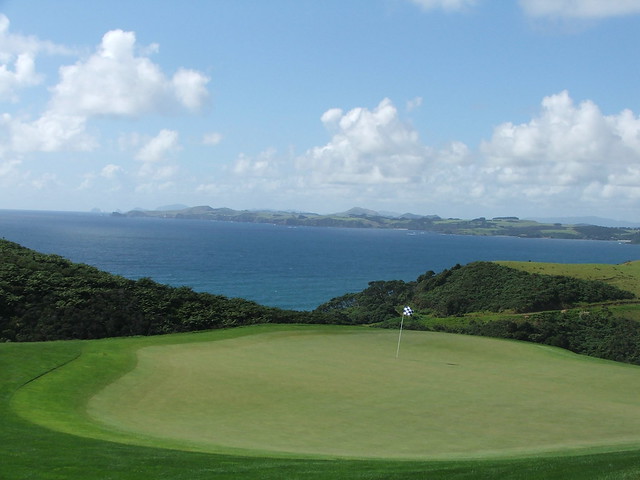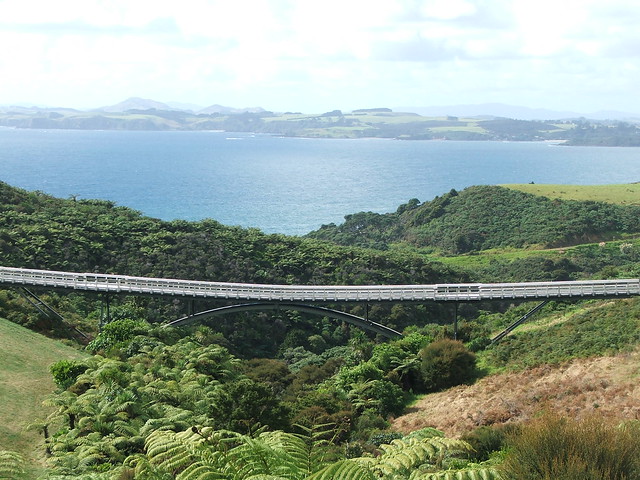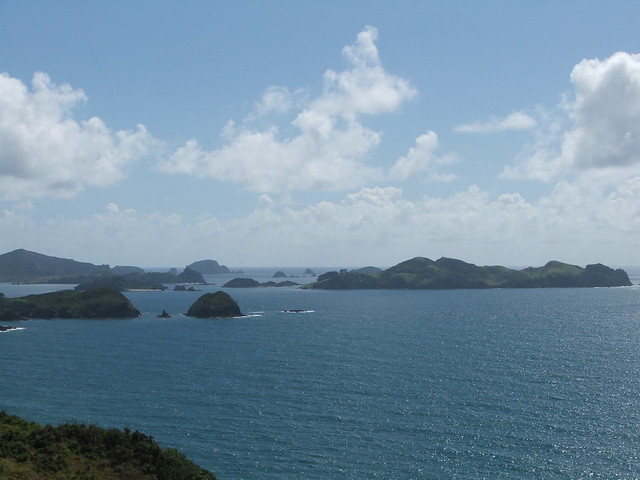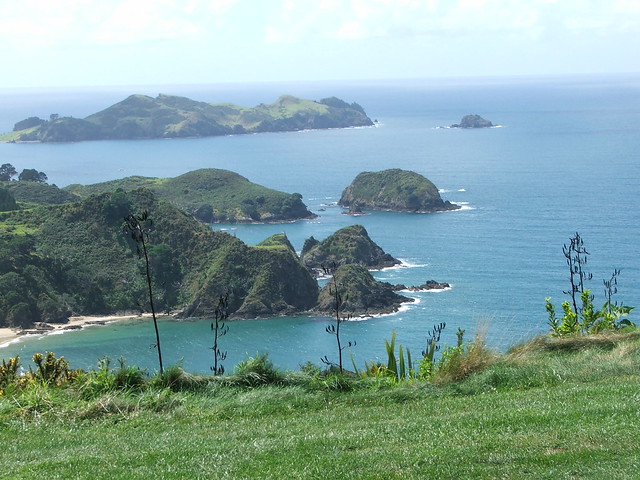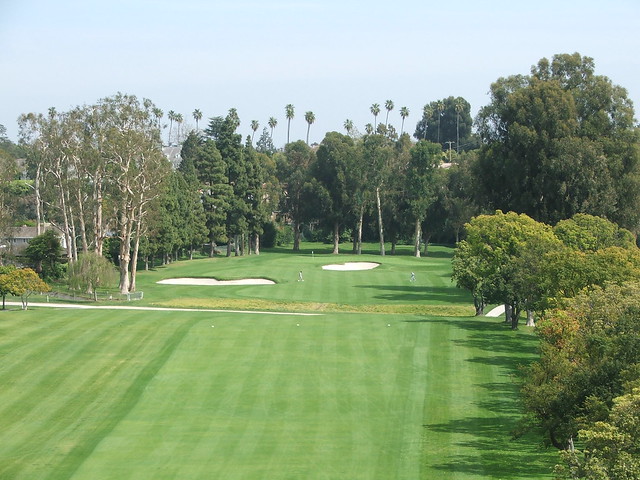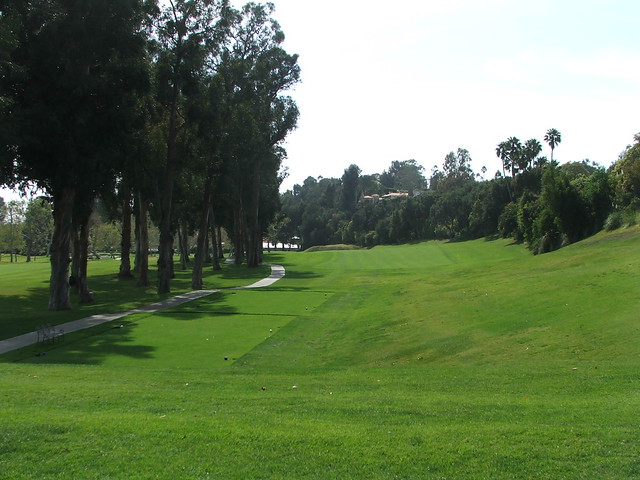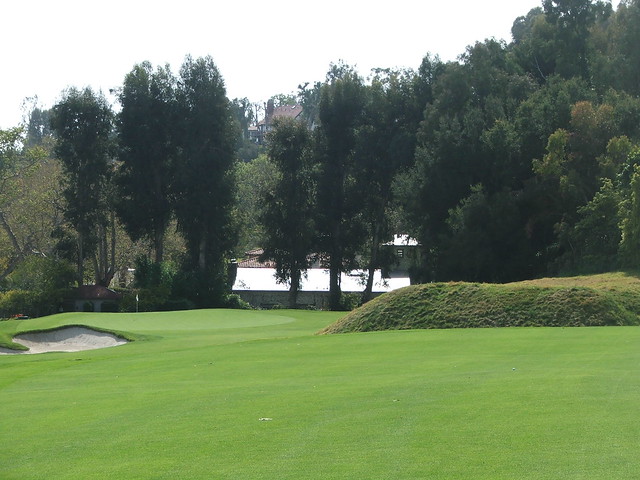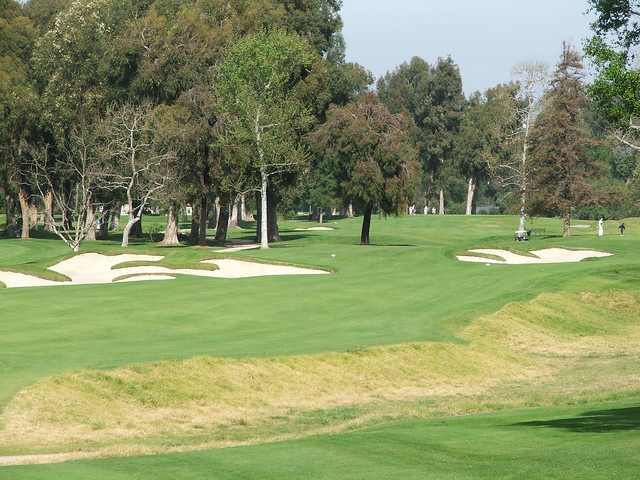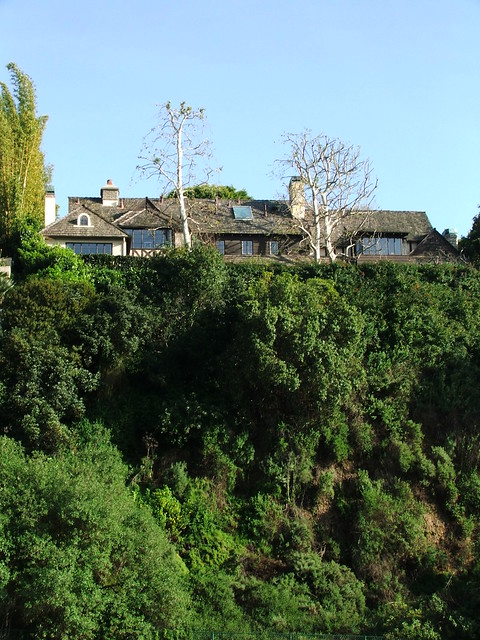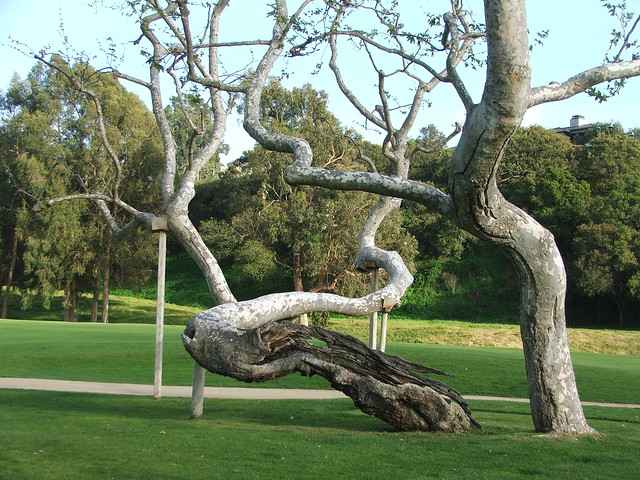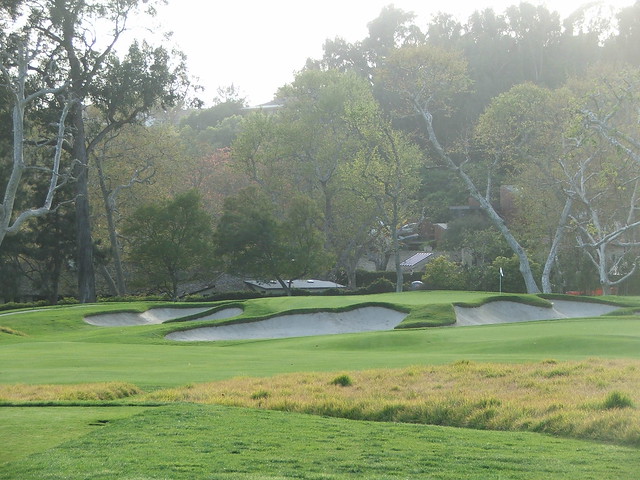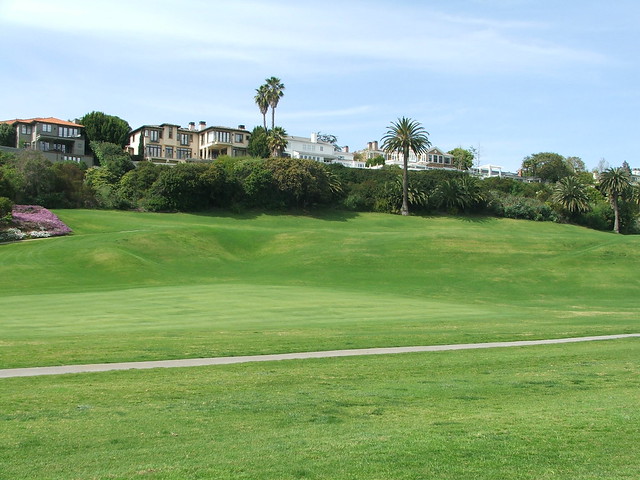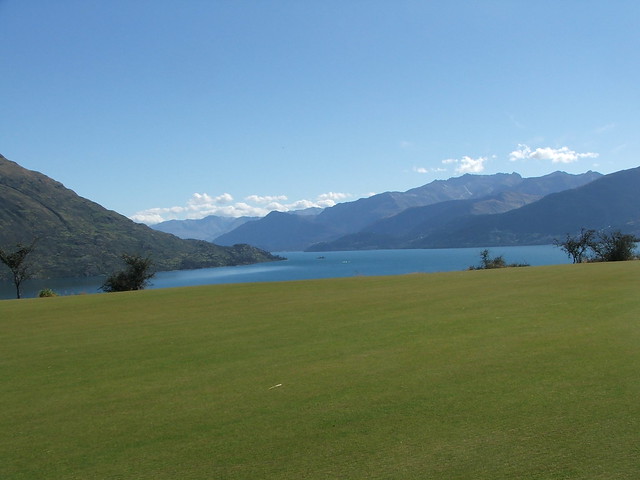Cape Kidnappers is located on the middle part of the North Island of New Zealand, near the town of Napier. Napier is a quaint place that is known as the world's most thoroughly Art Deco city and is a UNESCO World Heritage site. The city was destroyed by an earthquake in 1931 and was rebuilt over the next couple of years entirely in the Deco style.
 An example of the Art Deco architecture in Napier
An example of the Art Deco architecture in Napier When we flew down from Kauri Cliffs our our way to Napier after changing planes in Auckland, we never showed any identification or went through security of any kind, which is a nice change from the dehumanizing nightmare that flying in the U.S. has become. My day playing Kidnappers began with a walk on the beach, freshly brewed cup of coffee in hand, wearing shorts and a golf shirt, watching the sunrise with the cliffs of Cape Kidnappers in the middle distance. Louis Armstrong was right. "What a wonderful world." Staying in town, we had the opportunity to enjoy the fabulous architecture and got to mingle with locals on St. Patrick's Day, as opposed to staying overnight at the billionaire's playground for US$1,300 per night. Although not on the 2003 Golf Magazine Top 100 list which I am playing, Cape Kidnappers is ranked #27 in the world on a recent list.
Cape Kidnappers is the second course I have played with a Captain Cook connection (New South Wales in Sydney is the other). Cook sailed the HMS Endeavor into the cove off the course, and one of his Tahitian guides was alleged to have been kidnapped, giving the area its name. The high headlands, which Cape Kidnappers is built on, are visible from Napier and the picture below can give you some perspective on its Gibraltaresque size.
 The headlands of Cape Kidnappers seen from Napier
The headlands of Cape Kidnappers seen from Napier The entry drive at Cape Kidnappers vaults to the top of my list of dramatic golf course entrances. It eclipses all four of my other top entry drives: Sand Hills, Morfontaine, Yeamans Hall and Kauri Cliffs.
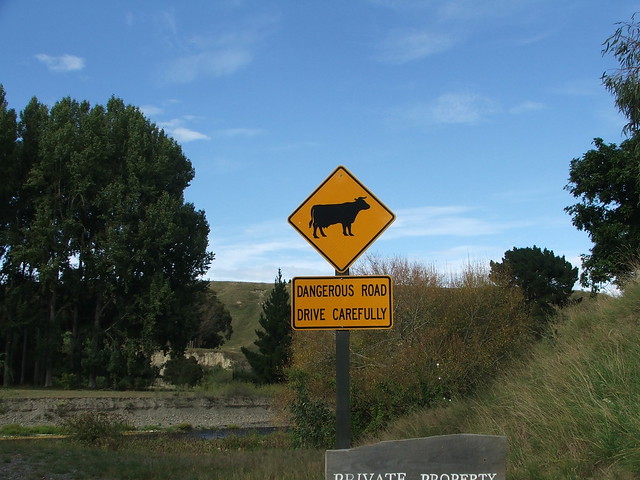
The beginning of the amazing entry drive at Cape Kidnappers
The front entrance is accessible by pressing a button to speak with the pro shop, and the gates are then opened by remote control. Once inside the gate, it is still a full seven kilometer drive up a winding road to get to the course. This has to be golf's equivalent of foreplay, if there is such a thing; the tension and excitement build as you climb each hairpin turn through the forest.
Cape Kidnappers has a more rustic feel than Kauri Cliffs and is more laid back. The staff is welcoming and accommodating, as they should be charging $400 for a round of golf!

The uphill wooded entry drive at Cape Kidnappers
Cape Kidnappers has been one of the most hyped courses built in the last ten years. It begins with a good first hole, but overall I found the 2nd through 6th, 10th, 11th and 17th a bit underwhelming relative to expectations. The course has very wide fairways, and Tom Doak, the course designer, always leaves a bailout area and a more forgiving route to the green for less skilled players. This less skilled player, for one, appreciates this design philosophy. The other side of this design philosophy is that if you play aggressively and make a mistake, there is a big penalty. The big penalty at Cape Kidnappers is being in the high rough, which is almost certainly a lost ball.
Despite the initial letdown of the front, I did like the variety of hole types. The course has some short par threes and some short par fours, which are nice because they take away the tedium of hitting hybrid clubs off the fairway all day long. Cape Kidnappers also puts a premium on putting, 'cause there ain't a flat green out there. I enjoyed the par three sixth hole, which reminded me a bit of the "Calamity" par three at Royal Portrush, but with the big drop-off on the left side of the hole instead of on the right. The hole plays over 200 yards and is a tester; It offers a preview of the immensity of the rocky gorges to come. The drop from the green to the water below is over 500 feet.
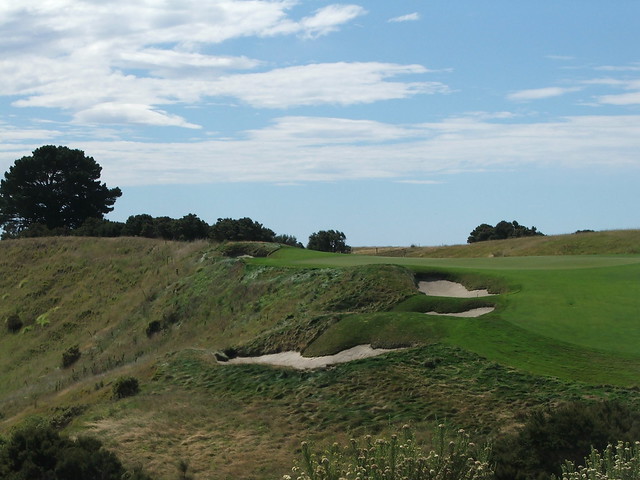
The tough par three 6th hole
The seventh hole features a semi-blind tee shot and then a big hollow between the driving area and the green. It is more than likely that your shot to the large green will also be blind, because the hill is so steep.
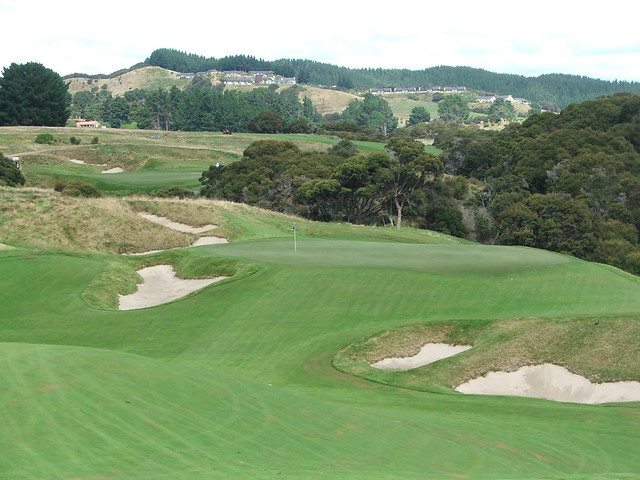
The seventh green seen from the top of the fairway
As is Doak's trademark, the greens at Cape Kidnappers are all interesting; although very hard to read. I didn't understand the eleventh hole at all. It is a 224 yard par three that requires you to walk far from the previous green, up a hill with a dramatic view. The tee shot is played back toward the 10th green alongside it. It seems to me that it would have made a much better hole if it were designed the other way around; that is, with the green situated on the hill, with the dramatic cliffs on the sides. The green would have then taken advantage of the view rather than having your back face it.

The par three 11th green The course really picks up steam on the twelfth hole, and it is the beginning of an unbelievable set of world-class holes in succession, starting with the twelfth and ending with the sixteenth. This part of the course plays among the fingers of rock formations above Hawke's Bay. All the pictures of the course that you see in magazines or when the course is advertised are of this stretch of the course taken from the air. Twelve is a classic 460 yard par four where the fairway is set at an angle to the tee, and you have to carry your tee shot over a gully. This hole allows you to decide how aggressive to be and is really fun. The green is situated on the top of a hill overlooking Hawke's Bay. The hole's name is "Infinity" because looking over the edge of the green, it looks like it goes on forever.
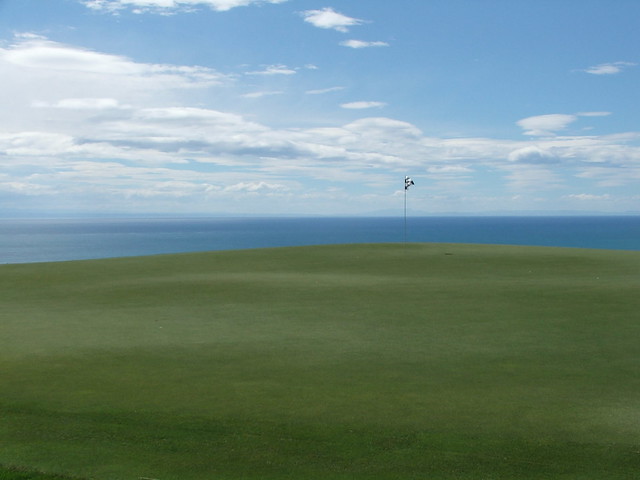
The 12th green appropriately named "Infinity"
Thirteen is a 130 yard par three ("Al's Ace") with a beautiful view of the cliffs and Hawke's Bay, and a large and severely undulating green. I recommend walking at Cape Kidnappers because some of the tee box positions are awkward to get to with a golf cart, such as the eleventh and thirteenth. With a cart it is difficult to figure out which clubs to bring to the tee because the wind is hard to factor in.
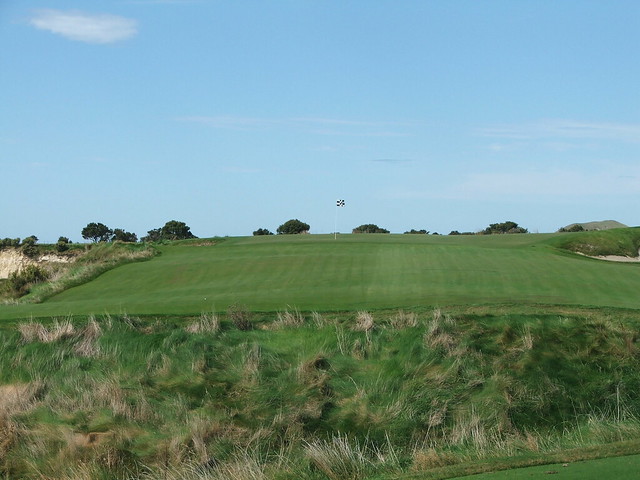
The uphill par three 13th green
Fourteen is a fun, short par four, albeit with a weird name, "Pimple." It plays 348 yards from the tips and is a good risk/reward hole with multiple playing options. There is a simple but deadly pot bunker near the green that is as magnetic as the Road Hole bunker at St. Andrews and comes into play in a similar fashion.
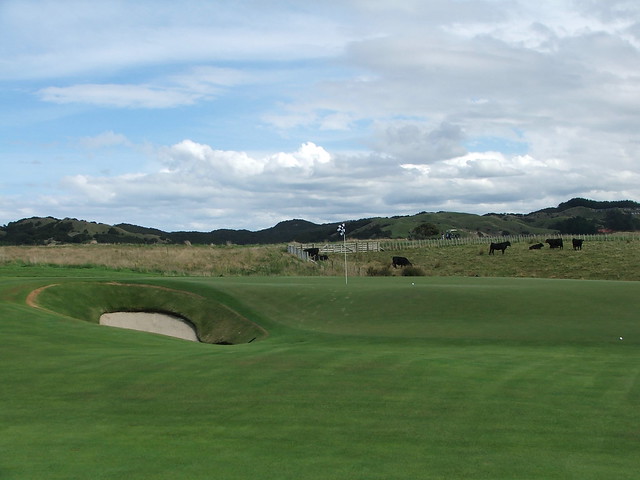
The short par four 14th green
The fifteenth hole ("Pirate's Plank") is one of the best par fives - make that holes of any kind, in the world. It plays 650 yards from the tips and 550 from the tees for high handicappers. The hole subtly gets progressively narrower from tee to green. The left side of the fairway falls off into a jagged gorge with the South Pacific about 500 feet below you. There are at least a half-dozen signs along the left side of the fairway warning you not to go over the fences or get too close to the edge, because it is sayonara if you do. The prevailing wind (at least the day we played) is in your face, adding to the challenge. The green sits on a cliff on the edge of the world, with a dramatic view in all directions.
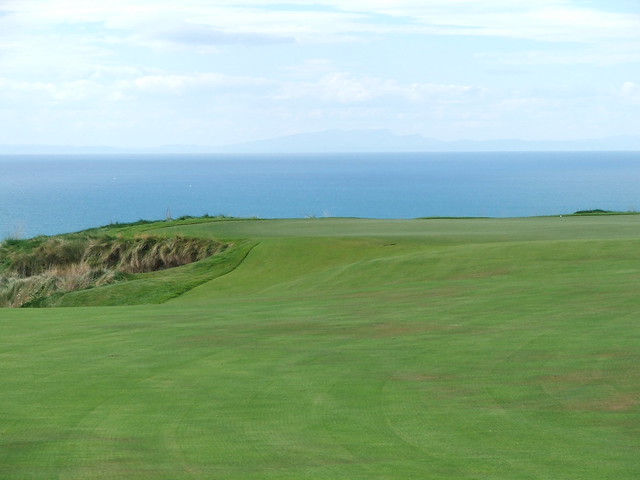
The par five 15th seen from the fairway looking toward the green
Aside from the exhilirating views, the fifteenth hole offers options to be conservative or aggressive. I was lucky to play it on a day with only a mild wind. Being so exposed up on the cliff top, I can't imagine playing it when the wind is blowing. As they say down here, it is pure. Below is one of the vertiginous views on the hole. To give you a sense of the sensation you feel playing the hole, one of the guys in our group actually had to back away from the edge of the fairway because it drops off so precipitously and he is afraid of heights. The fifteenth hole is Rara Avis (for my friends in New Jersey, it is a rare bird, quite out of the common). There are not many places in the world where a hole like this can be built. It took balls to build it, and it really came off exceptionally well.
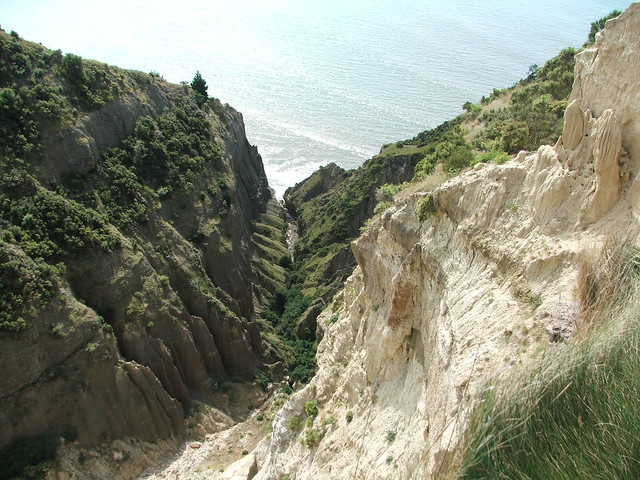
View of the gorge from the 15th fairway
Like Cypress Point, Kidnappers features back-to-back par fives. The sixteenth is a par five in the opposite direction from the fifteenth, this time playing downwind. The hole is only 500 yards from the tips. The fairway heaves quite a bit in different directions, and the green is elevated and funky. It is a very different hole than the fifteenth and has a wide fairway. It reminded me of the par five fifteenth hole at Kawana in Japan with the ripples and waves in the fairway. The hole is seen below looking back from the green.
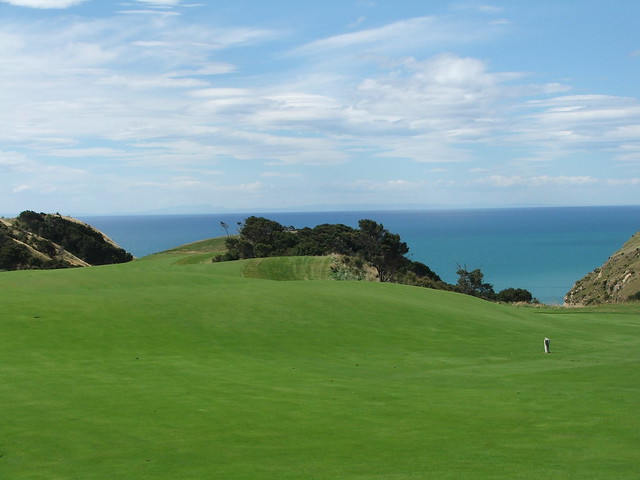
The par five 16th looking backward down the fairway
I've heard the par four seventeenth described as a great hole but I don't think so. I didn't find much about it to be unique. Eighteen is a good finishing hole and features a punchbowl green.
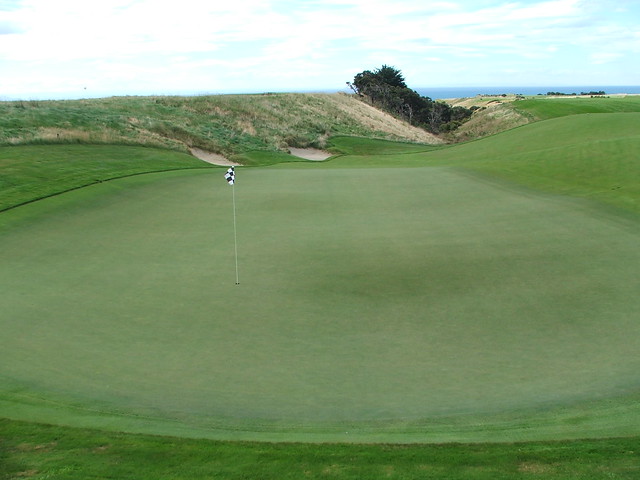
The punchbowl 18th green at Cape Kidnappers
Cape Kidnappers is in many respects ultimately like Pebble Beach. What makes Pebble Beach so great is a half dozen spectacular holes, which compensate for many holes that are good, but not great. Cape Kidnappers also has a collection of holes that are so superior in their own right that they make up for some average holes and make it a worthy course to be included among the best in the world.
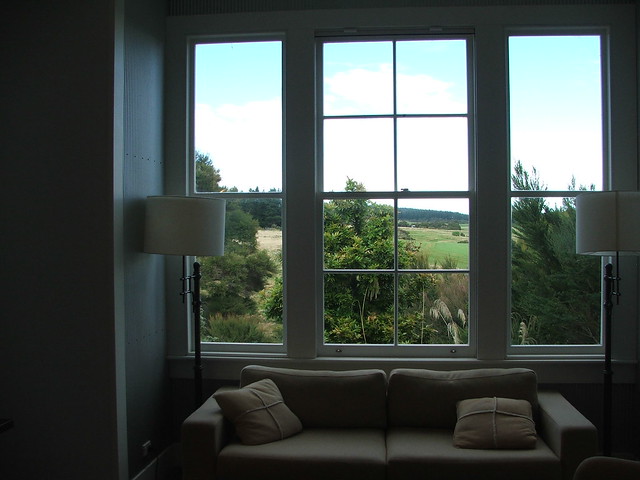
Not a bad view when changing into your golf shoes: Kidnappers locker room
Just like when we played at Kauri Cliffs, there was almost no one on the course in March. As a commercial enterprise, me thinks neither of these work. It's great to have Julian Robertson subsidize them; he could have chosen to build these and make them exclusive preserves like Kerry Packer did with Ellerston in Australia. It seems to me they are just too remote and expensive to make it on their own, even with the high prices. Unlike The Donald, Robertson actually has class and builds quality, and I for one am grateful he did it and opened up two unique locations for the world to see.
New Zealand has some spectacular and dramatic golf. Combine the front nine of Kauri Cliffs with the back nine of Cape Kidnappers and you've got the eighteen prettiest holes in the world. As I was walking off the eighteenth green I saw that fat lady again, this time she was arriving and looked very serious. I'm afraid at some point in the not too distant future she's going to sing. This has to be more than a coincidence.

